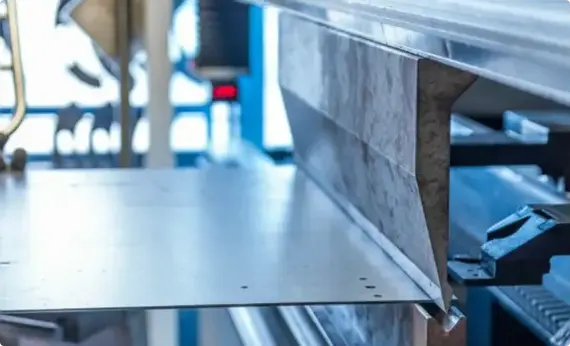
Detailed summary of the main uses of SUS 321
1. High-temperature engineering field Furnaces, pipes, nozzles, heat exchangers: SUS 321 stainless steel can maintain good corrosion resistance and stability at
1. High-temperature engineering field
Furnaces, pipes, nozzles, heat exchangers: SUS 321 stainless steel can maintain good corrosion resistance and stability at high temperatures, so it is widely used in these equipment.
Heat treatment process: In the process of metal heat treatment, SUS 321 stainless steel is used as high-temperature furnaces, heat treatment baskets and other high-temperature resistant equipment.
Turbine manufacturing: used to manufacture steam turbine burners, high-temperature components of gas turbines, and other parts that require high temperature resistance and oxidation resistance.
2. Aerospace field
Engine, turbine blades, gas turbines: SUS 321 stainless steel has become an ideal material for these key components due to its high strength, high temperature resistance and corrosion resistance.
Rockets and missiles: In the manufacture of aerospace vehicles, SUS 321 stainless steel also plays an important role to ensure the stable operation of equipment in extreme environments.
3. Chemical industry
Storage tanks, pipelines, reactors: SUS 321 stainless steel has good corrosion resistance in acidic and alkaline environments, so it is widely used in the manufacture of these equipment, especially in processes containing acidic media or high-temperature oxidizing environments.
4. Petroleum industry
Petroleum pipelines, storage tanks: In the process of oil refining, natural gas extraction and processing, SUS 321 stainless steel is widely used due to its high temperature resistance and corrosion resistance.
5. Pharmaceutical industry
Drug production equipment, medical equipment: The high temperature strength of SUS 321 stainless steel can ensure long-term stable mechanical properties and does not produce adverse reactions, so it has important applications in the manufacture of medical equipment, such as surgical instruments, artificial joints, etc.
6. Energy field
Nuclear power, petroleum, chemical industry: The heat resistance and corrosion resistance of SUS 321 stainless steel make it the preferred material in these fields, such as nuclear reactor pressure vessels, petroleum pipelines, chemical reactors, etc.
7. Other high-end fields
Nuclear magnetic resonance systems, semiconductor manufacturing equipment, high-end automotive parts: Due to the excellent comprehensive performance of SUS 321 stainless steel, these fields also have a wide range of application needs for it.
8. Food processing
Food processing equipment, tableware: SUS 321 stainless steel has good hygiene and corrosion resistance in the food processing process, so it is often used in these fields.
stainless steel processing
The manufacture of stainless steel involves a series of processes. First, the steel is melted, and then it is cast into solid form. After various forming steps, the steel is heat treated and then cleaned and polished to give it the desired finish. Next, it is packaged and sent to manufacturers, who weld and join the steel to produce the desired shapes.

Melting and Casting
The raw materials that constitute a stainless steel item are placed together and melted in a giant electric furnace. Intense heat is applied rigorously for a period of 8 to 12 hours during this step. Once the melting is complete, the molten steel is cast into desired semi-finished forms. Some of the most common forms or shapes include slabs, blooms (rectangular shapes), billets (these could either be round or square), rods, and tube rounds.

Forming
In the second stage, the semi-finished steel shapes undergo a series of forming operations. For instance, the stainless steel is hot rolled (heated and passed through enormous rolls). The blooms and billets mentioned above are converted to bar and wire. The slabs on the other hand are formed into plates, strips or sheets. It is very common to turn semi-finished steel shapes into bars, as it is the most versatile stainless steel form (it comes in all grades and sizes). You have round, square, octagonal, and hexagonal bars, each suitable for a different type of application.

Heat Treatment
The various stainless steel forms undergo a thorough annealing process during this step. Annealing is another name for heat treatment where the stainless steel is heated and cooled in a controlled environment. The purpose of this heat treatment is to relieve the pent-up stress inside the stainless steel and soften the material to make it more suitable for a wide variety of applications. The people in charge of carrying out the annealing process have to be very careful about the conditions as even the slightest of changes in the temperature, pressure, duration, or cooling rate could result in a faulty product.

Descaling
During the annealing process, a certain amount of scale appears on the surface of the stainless steel. This scale can be removed using a number of different processes that are collectively known as descaling. Pickling is one of the more common methods of carrying out the descaling process.

Cutting
The semi-finished, heat-treated, and descaled stainless steel forms are cut into specific shapes in this step. Mechanical cutting is performed with the aid of guillotine knives, blanking, nibbling, and high-speed blades.

Finishing
Finishing is applied to help the stainless steel product achieve its signature aesthetically appealing appearance. Finishes are also needed to make the stainless steel product smooth and easier to clean, which is a top requirement in sanitary applications.
